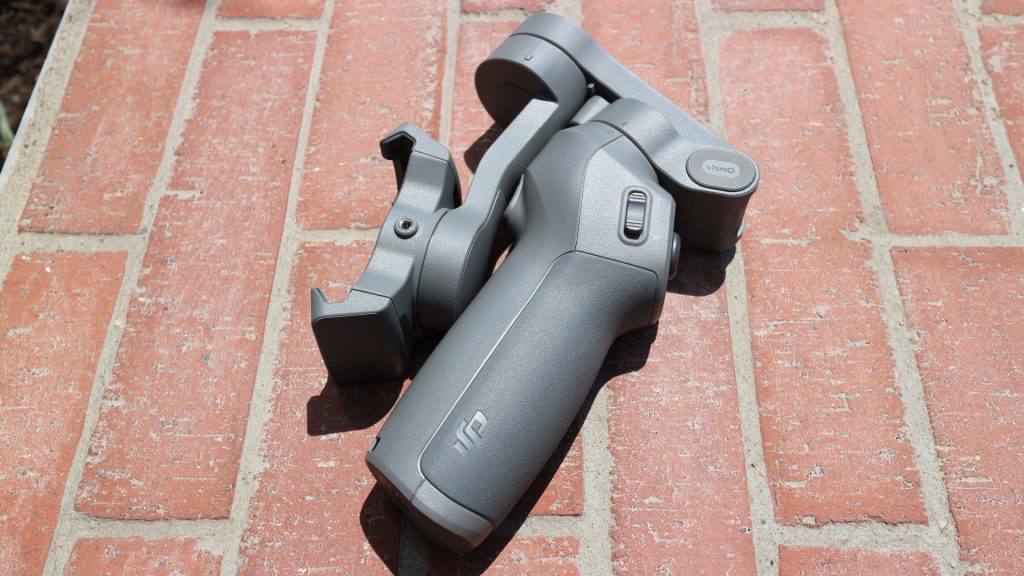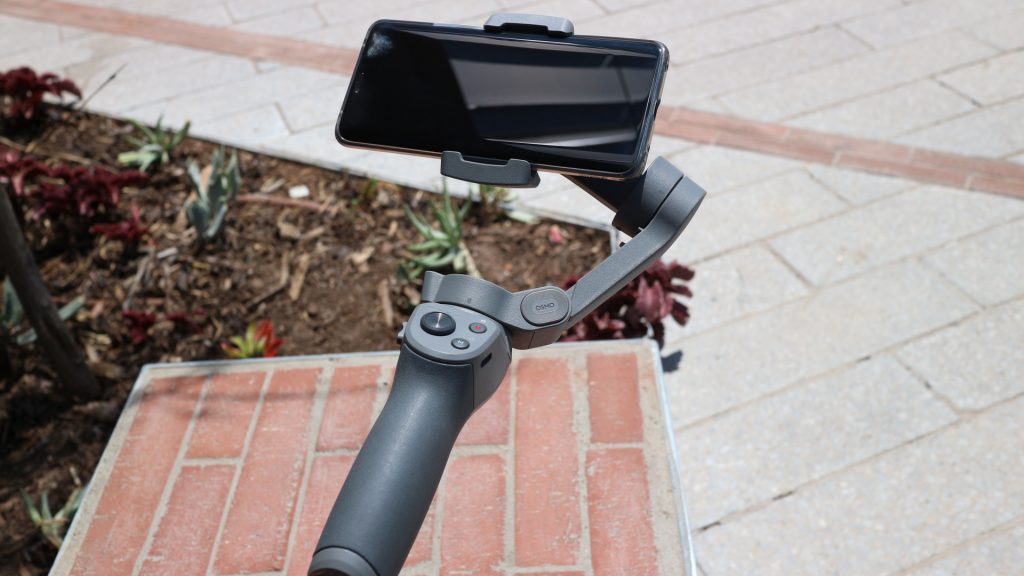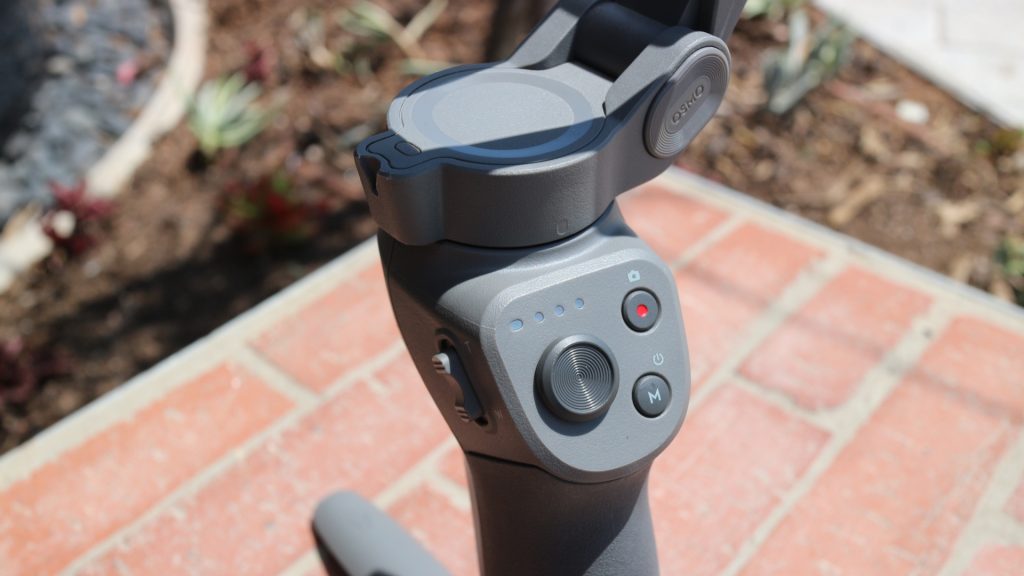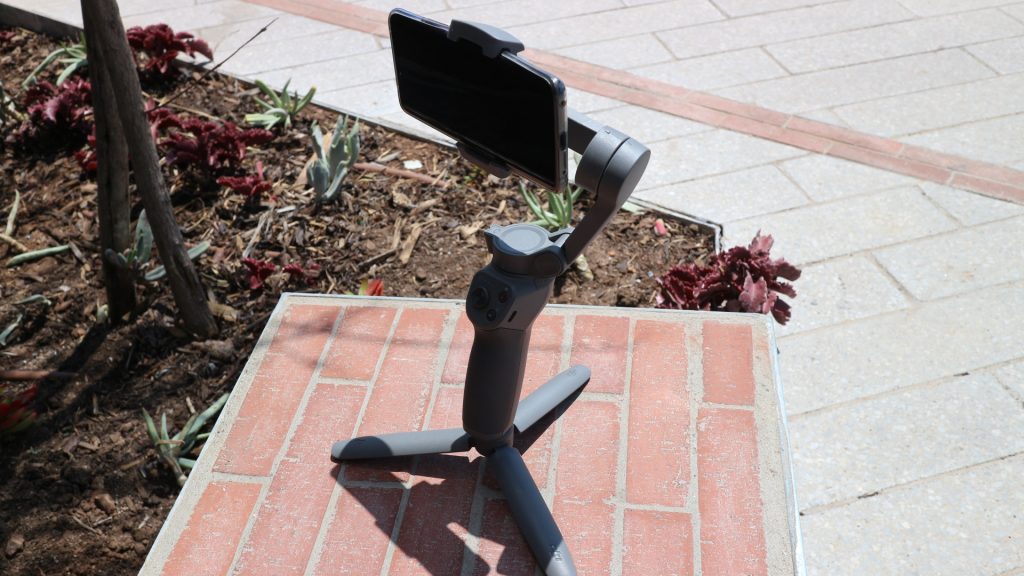The term content creator gets thrown around quite a bit these days, with all it taking is a smartphone in hand to be considered one. That’s all well and good, but when you want to take your content creation to a higher level of quality, it’s worthwhile investing in some additional tools to set you apart from the rest.
One such tool is the DJI Osmo Mobile 3, which the Chinese firm unveiled earlier this year and recently made available to South Africans.
To gauge whether this smartphone gimbal is a tool that content creators will want to add to their setup, or simply an accessory that grabs onlooker’s attention more than anything else, we took the Osmo Mobile 3 for a spin over the past couple of weeks.
Here’s what we learned in that time.
Kinda compact
The first thing you encounter when unboxing the Osmo Mobile 3 may be its most important change compared to its predecessor – it’s now foldable.
Yes the gimbal can now be folded up into a more compact shape, which is not altogether revolutionary, but when space in your bag is at a premium, the foldable design does help. There is also the mental benefit of not having to worry about people staring at you when you’re holding and shooting on the Mobile 3.
This may seem like a small consideration, but when you’re in spaces with a lot of people, many of whom are camera-shy, it can certainly help.
As for the compactness of the device, our review model came with a carrying bag, which does not have any space for anything other than the Mobile 3. As such you may want to find yourself a larger carrying alternative.
Again we’re not talking deal breakers here, but simply aspects that will improve the use of the Mobile 3 overall.
Ready in a flash
Now let’s talk about what happens when this smartphone gimbal is unfolded. Here the DJI MIMO app plays the crucial aspect, prompting users to create an account and log in, as well as helping to pair up the gimbal to your smartphone in order to begin capturing footage.
The setup process is a real breeze, and even the most inexperienced of DJI hardware users will get accustom to things quickly thanks to the MIMO app.
As for the smartphone we used during our review, the Huawei Mate 20 Pro was our device of choice, mainly as it’s our daily driver, but also the camera quality it provides is great.
This may be one element to consider when using the Osmo Mobile 3, as the better the camera on offer form the phone, the better the content. As such don’t expect the Mobile 3 or MIMO app to work miracles if the hardware is not strong enough.
Coming in at 405g, the Osmo Mobile 3 is a solidly constructed piece of tech, and with the Mate 20 Pro sees the weight rise to 594g. Things overall feel nicely balanced and never became unwieldy during our review period. There’s also notifications that pop on the MIMO app should things became less than stable when you’re trying to capture footage.
Looking at the rest of the app, it’s the timelapse feature which we used most of all, with it proving particularly handy when attending events are capturing video of cityscapes and larger environments. Yes, there is indeed a touch of Casey Neistat about it, and if you’re a fan of his use of timelapse, the Mobile 3 can help you emulate them.
Keeping things steady
Now let’s focus on what the DJI Osmo Mobile 3 is designed to do – provide stability when recording with your smartphone.
Here the gimbal excels, providing steady shooting despite our best efforts to move and shake while testing the stabilisation on offer. It proved good when walking through a crowd in particular, which we were able to test to the full at the recent Comic Con Africa and Vodacom rAge events.
We should note though that if you plan to shoot in crowds or cramped spaces, the Mobile 3 is going to need space in front of it to work most effectively. To that end you won’t be shifting the gimbal left or right while in hand and squeezing past people, but will need space ahead of you in order to keep things as fixed and steady as possible.
The doors at #rAgeExpo2019 are now open. pic.twitter.com/ENOWMxGrON
— Hypertext (@htxtafrica) September 27, 2019
One of the other elements we tested out on the Osmo Mobile 3 was the object tracking. Here the experience was mixed, and not in the way we were expecting.
An example of this was the difference in performance when tracking a stationary object at close range, compared to tracking a moving object at far range.
Curiously the latter performed better in our experience, particularly when it came to tracking our dogs running around in the garden. Conversely still objects at close range struggled to stay central of the video frame while recording, with fast movements or adjustments also creating a bit of lag.
With this aspect it’s unclear whether the software of the MIMO app or quality of the smartphone camera have had an impact. Either way it’s something that will require some fine tuning on the next iteration of Osmo Mobile gimbal.
Final verdict
The Osmo Mobile 3, like many DJI products, does not come cheap. The standard version costs R1 895 with the combo pack more expensive at R2 255.
While that is indeed a hefty price tag for a smartphone gimbal, we have to say the combo pack is the better investment, mainly as it has the tripod grip attachment. This accessory is a must if you plan to shoot still video or timelapses, as well as doubling as an extension to the handle if a bit more length is needed.
All in all, the Osmo Mobile 3 is a wise purchase for any content creator wanting to add more elements to their shooting capabilities. If you are willing to pay the premium price for it, this smartphone gimbal will stand you in good stead.






